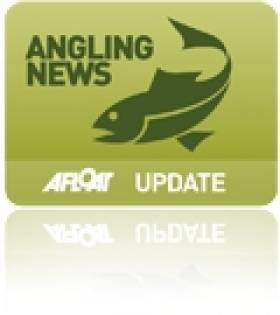Displaying items by tag: River Rye
Fish Kill Confirmed on River Rye in Leixlip
Inland Fisheries Ireland (IFI) says it is investigating a serious fish kill incident at the River Rye in Leixlip, Co Kildare.
Environmental and fisheries officers from the Eastern River Basin District in Dublin were alerted to the incident on the evening of Wednesday 8 June.
Water and fish samples were taken from the scene and removed for scientific analysis at an independent laboratory.
IFI estimates that there could be in excess of 500 mortalities of brown trout plus other fish species in the impacted area covering approximately 2km of river.
Investigations are ongoing and IFI, the State agency responsible for the protection and conservation of freshwater fish and habitats, says it is not in a position to comment on the cause of the fish kill at this stage, pending further analysis of samples taken.
The River Rye (or Ryewater) is an important spawning river for brown trout and a key spawning channel for a highly sensitive population of Atlantic salmon within the River Liffey catchment area.
To report fish kills, members of the public are encouraged to call IFI’s confidential 24-hour hotline number on 0818 34 74 24.
Tribute to River Liffey Salmon Pioneer
#ANGLING - A plaque paying tribute to the late secretary of the Dublin Salmon Anglers' Association has been inveiled at Carton Estate in Co Kildare.
Patrick 'Pat' O'Molloy, who died in November last year, was commemmorated for his pioneering work over the last 35 years in the rehabilitation and restoration of wild salmon stock in the River Liffey, The Irish Times reports.
This involved introducing micro-tagged smolts into the Rye, a tributary of the Liffey upriver of the Carton Estate weir which was impassable from further downstream.
Sadly O'Molloy died before the return of salmon to the Liffey in a year that also saw their return to the Tolka afer more than a century.
Former fisheries CEO Alan McGurdy said at the ceremony: "As you all know, Pat was an angler, a board member, environmentalist, fish farmer and most of all, a friend.
"Today is some recognition to the great man for the tremendous work he did to look after our fish."






























































